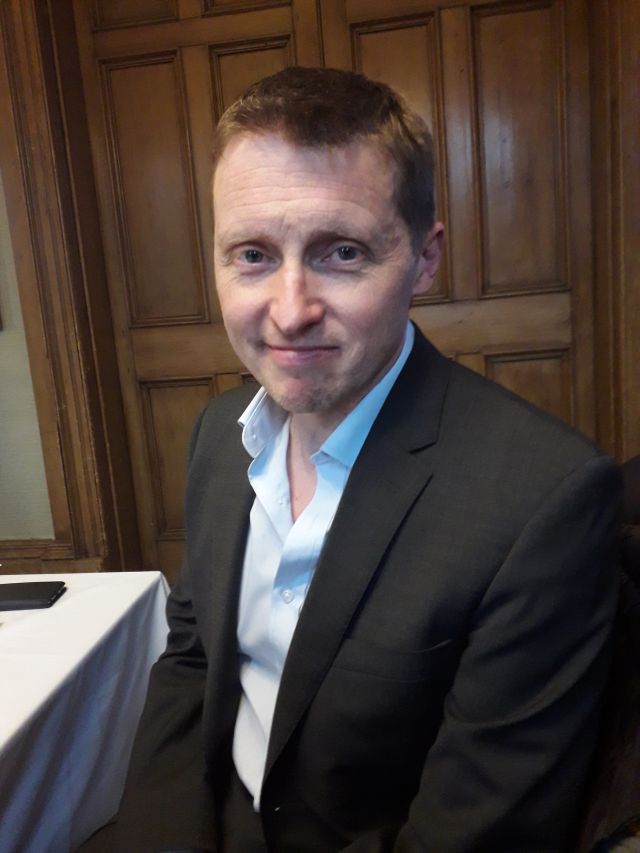RSGS was formed in 1884 by John George Bartholomew, of the Bartholomew map-making company in Edinburgh and the daughter of David Livingstone, Agnes Livingstone-Bruce. In 1904-5, its secretary was Sir Ernest Shackleton – and the equivalent post today is held by Chief Executive, Mike Robinson.

Geography seeks to explain the links between different areas of research and interest relating to life on earth. And in Scotland, the RSGS aims to promote geographical understanding and joined-up approaches, whilst inspiring people, championing the best of Scotland and presenting the best examples of world practice.
After 115 years in Edinburgh, the Society moved to Glasgow where accommodation at Strathclyde University proved inconspicuous and altogether not ideal – new Headquarters were therefore found in 2008 by refurbishing the Fair Maid’s House in Perth, the geographical heart of the country. This is where the Society currently operates its headquarters from.
Nearly £1M was spent on the Fair Maid’s House, in part to open up the Society’s collection, including items such as the RSGS’s historic visitor book which contains an enviable list of signatures. These include Edinburgh Lord Provost Sir George Harrison and a rich tapestry of explorers from history: Fridtjof Nansen, Thor Heyerdahl, Edmund Hilary, Neil Armstrong, WH Murray, William Speirs Bruce and Burn Murdoch to name but a few. And since 2015, Writer-in-Residence Jo Woolf has been researching the remarkable stories associated with these names for her debut book The Great Horizon – a project crowdfunded by RSGS Members.
In 2011, geology professor and television presenter Ian Stewart became President and has since featured regularly in the Society’s talk’s programme. Nearly one hundred talks per year are organised by the RSGS in 13 locations across Scotland. Recent stars include Doug Allan, Benedict Allen, Wade Davis, Emily Penn, Borge Ousland and the executive producer of Blue Planet II, James Honeyborne.
Prestigious medals in the names of people like Livingstone, Coppock and Bruce are also given to high-profile recipients each year – and past recipients have included the likes of David Attenborough, Annie Lennox, Michael Palin, Mary Robinson, Gordon Buchanan and, most recently, the pilots of Solar Impulse, Betrand Piccard and Andre Borschberg.
Another key part of the Society’s work is their quarterly magazine, The Geographer. With a readership of 12,500, the publication aims to bring a range of expertise together and explore critical issues – a reaction to a dearth of intelligent comment currently available. Along the way, they’ve received articles from authors ranging from the Dalai Lama and James Cameron to Ellen MacCarthur and Mark Carney. The impact of The Geographer is considerable, and it often feeds into policy consultations and academic conferences. Indeed, it is currently being used to support a specific Government consultation on ‘Building a Good Food nation in Scotland’ – a project to ensure people from every walk of life take pride and pleasure in, and benefit from, the food they produce, buy, cook, serve, and eat each day. In terms of publications, the Society also produces the Young Geographer and the academic, peer-reviewed Scottish Geographical Journal.
The RSGS has a sizeable and significant network, and has built partnerships with NGOs, governments, businesses and public bodies over the years. These include organisations such as SEPA, Outward Bound and the Royal Canadian Geographical Society. This positioning helps promote joined-up thinking and facilitates collective, co-ordinated responses to issues such as vacant and derelict land, narrowing of curricula, transport infrastructure, climate change plus much more.
RSGS’s strategy is to bring people together in the belief that a strong Scotland needs strong institutions like itself and the Saltire Society.